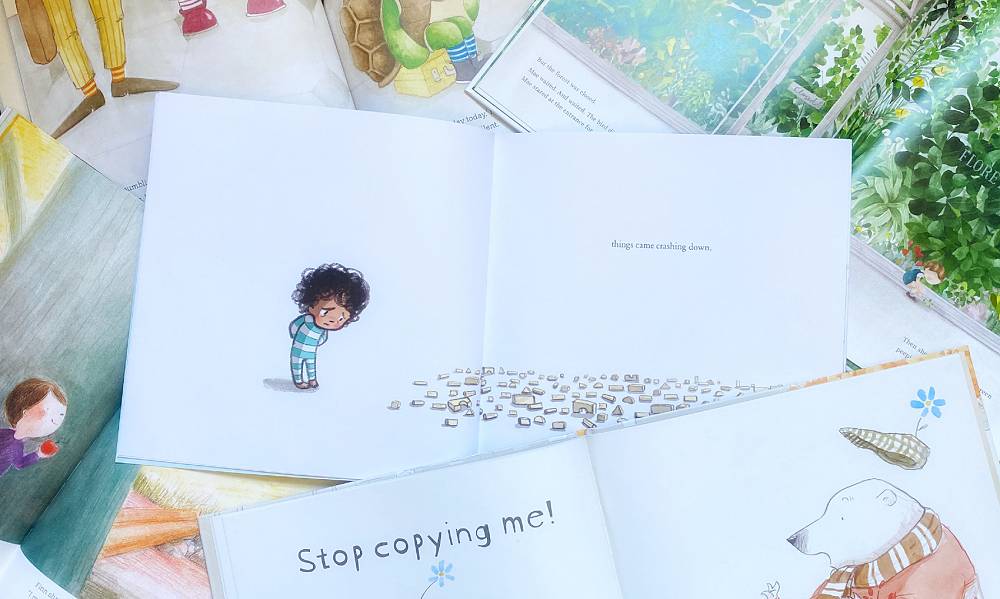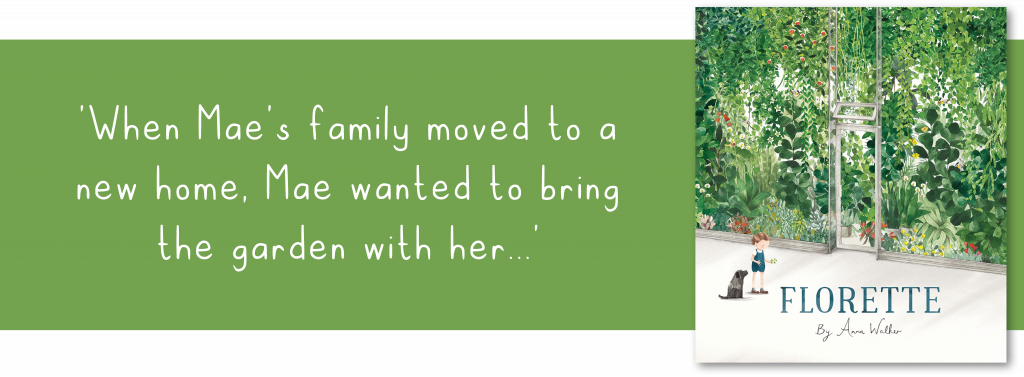Welcome back to the MTA Book Blog, this month coming to you from my lockdown book cave here in Sydney.
If you haven’t had chance yet, do check out the previous book blog post, Telling the Story of Lockdown, posted back in June. At the time, I could never have guessed that we were only days away from a new and challenging chapter of Australia and New Zealand’s own pandemic story.
The events of the past 18 months have certainly highlighted the importance of being able to cope with unexpected change and challenges, so, for this post, I have selected five gorgeous picture books that feature characters who are experiencing disruption in all shapes and sizes. From the inconvenient and frustrating to the utterly life-changing, these stories span the spectrum of sources of disruption and challenge in a child’s life and, crucially, offer hope through their various outcomes.
So, relax your shoulders, unclench your jaw, put the kettle on and settle down with me to discover these perfect picture books for unsettling times.
‘We’re Stuck’ by Sue DeGennaro 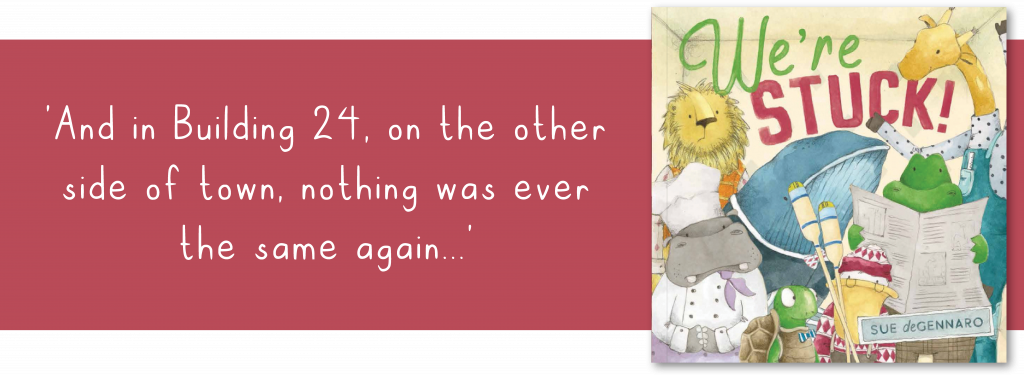
Let’s start by getting stuck into the adorable ‘We’re Stuck’ by Australian author/illustrator, Sue deGennaro. When the residents of Building 24 shuffle into their lift one morning, they are all far too preoccupied with their own busyness to even notice one another. But, when the lift suddenly breaks down, with a dismayed birthday boy trapped inside, the lift’s occupants soon shift their focus from their own needs to each other’s.
A sweet and heart-warming tale of resilience, adaptability and community, students will certainly be able to relate to the themes addressed in ‘We’re Stuck’. A follow-up discussion that invites students to share their own experiences of being stuck in place and having to put their plans on hold will create a meaningful text-to-real-world connection and encourage them to reflect on the importance of recognising that some of life’s unsettling challenges are merely a moment in time.
‘Norton and the Bear’ by Gabriel Evans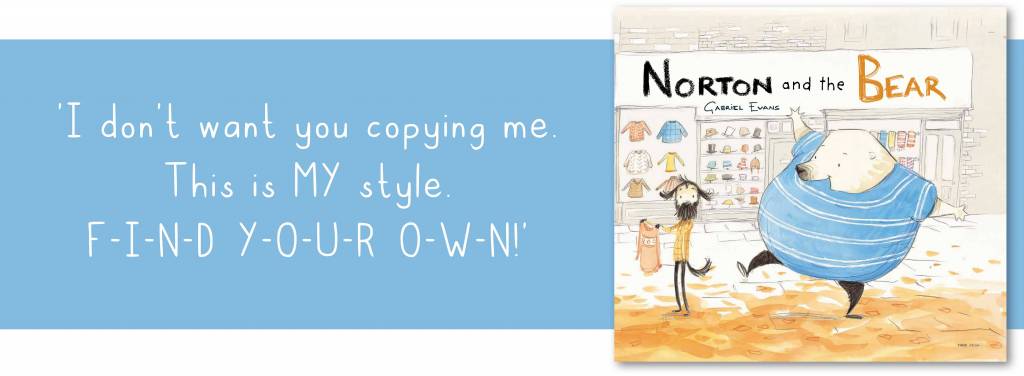
Is imitation the sincerest form of flattery? Or is it just annoying? This is the question at the heart of the delightfully charming ‘Norton and the Bear’ by Aussie author/illustrator Gabriel Evans. Norton prides himself on his unique dress sense, so when the relentlessly complimentary Bear insists on copying Norton’s outfit at every turn it is simply unbearable! However, after Norton loses his temper with the Bear and insists that he stop copying him, the Bear turns up with a new accessory that Norton really, REALLY likes…
Between the ages of 3 and 5 is when children begin to form a sense of self, developing their identity and individuality. ‘Norton and the Bear’ perfectly illustrates how challenges to our identity can loom large, especially for young children for whom the sense of self is still relatively fragile. Whether you identify more with the frustrated Norton or the endearingly earnest Bear, I guarantee that you and your students will instantly fall in love with this story and find comfort in the knowledge that, unsettling though it may be, imitation is almost always a form of flattery!
Yet another stunning picture book from an Australian author/illustrator extraordinaire, ‘Florette’ by Anna Walker introduces us to Mae, whose life has been uprooted by her family’s decision to move to the city. Mae misses her friends, she misses her old life and, most of all, she misses her garden. However, when she ventures further into her new environment, Mae finds something that plants the seed for a different type of garden, and some new friends along with it.
Moving house is an immensely unsettling and disruptive event that many of your students will likely be able to relate to. Through Walker’s skilful visual storytelling, ‘Florette’ quietly celebrates children’s emotional resilience in adapting to environmental change and shows us that, ultimately, home is not a place, but a feeling, and one which we can carry with us and recreate wherever we go.
‘The Rabbit Listened’ by Cori Doerrfeld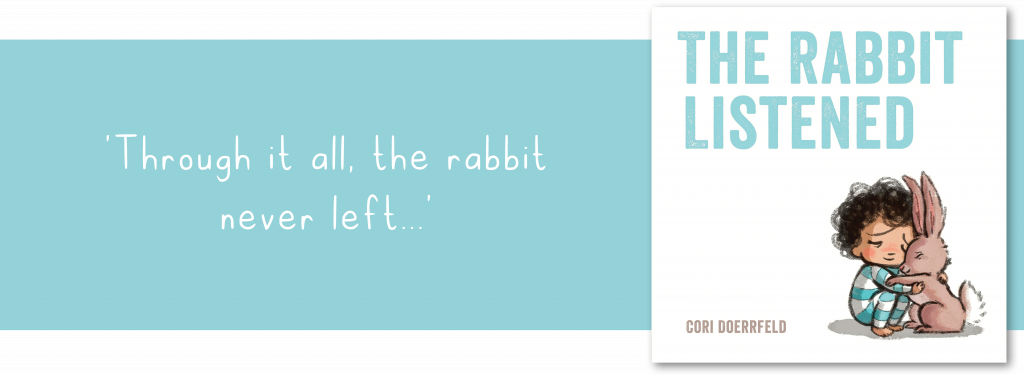
Next up, we have ‘The Rabbit Listened’, and I should put in my disclaimer up front and say, I absolutely love this book. In this gentle, insightful story we meet Taylor, who is struck by a sudden loss that brings his day (literally) crashing down. Everyone around Taylor tries to coach him in how he should cope with his sadness, but it is only when they all leave and a little rabbit comes to sit and listen that Taylor finds the space to adequately process his emotions.
When someone we care about is upset, it can be a very natural response to try and impose our own coping strategies on them, and to even lose patience when they aren’t responsive to our efforts to ‘fix’ the situation. This is something that can be especially difficult for young children to understand, and ‘The Rabbit Listened’ provides the perfect framework to begin that discussion around different approaches to processing trauma, both for the one who is suffering and, importantly, for those around them.
‘Finn’s Feather’ by Rachel Noble and Zoey Abbott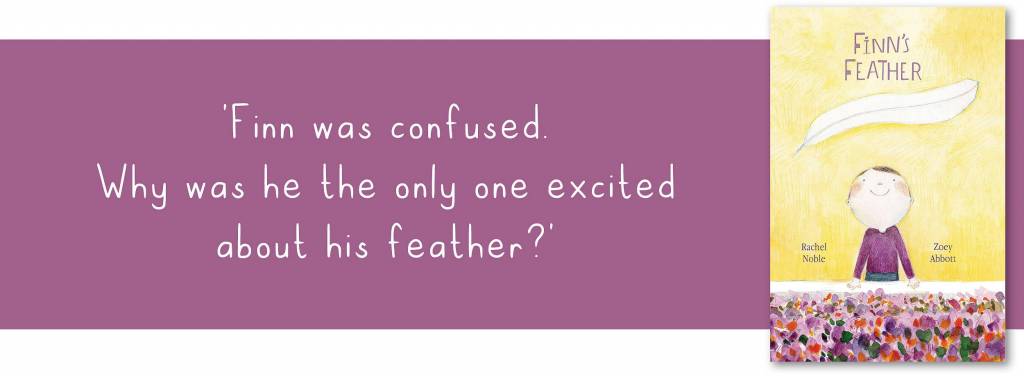
Tissues at the ready for this one. In the heart-wrenchingly touching ‘Finn’s Feather’ we join Finn, who, on the first day of spring, opens his front door to find a feather on his doorstep. Confident in the knowledge that the feather is a gift from his recently deceased brother, Hamish, Finn excitedly shows the feather first to his mother and then to his teacher, neither of whom seem to want to encourage Finn’s belief that the feather was sent by his brother. However, when Finn shows the feather to his best friend Lucas, he immediately matches Finn’s excitement and the two boys set about finding ways to make the feather the centrepiece of their games.
Similarly to ‘The Rabbit Listened’, the beauty of ‘Finn’s Feather’ is the way it illustrates the highly unique and personal ways in which trauma manifests, particularly in children, and demonstrates the ineffectiveness of trying to impose our own coping mechanisms or perceived acceptable patterns of behaviour on the one who is suffering. The hero of this story is certainly Finn’s best friend Lucas who, far from dismissing Finn’s belief in the provenance of the feather, simply meets him where he is and allows him to exist in the reality of his grief.
Although the collective disruption that we are all currently experiencing will not last forever, unexpected change and challenge will rear their heads regularly throughout a child’s life. Books like these are fantastic tools to help build emotional resilience and provide a safe and accessible springboard for discussion during all manner of unsettling times.
And now, as I retreat into my book fort, I leave you with these wise words from beloved children’s author, E.B White.
‘A library is a good place to go when you feel unhappy, for there, in a book, you may find encouragement and comfort. A library is a good place to go when you feel bewildered or undecided, for there, in a book, you may have your question answered. Books are good company, in sad times and happy times, for books are people – people who have managed to stay alive by hiding between the covers of a book.’
Stay safe out there.
About the Author
Emily Bruce is the Managing Editor at Modern Teaching Aids (although she prefers the term Grammar-Wrangler-in-Chief). She has worked in children’s publishing in the UK and Australia for eight years and is passionate about finding the spark that ignites a lifelong love of literacy in the next generation of storytellers.

